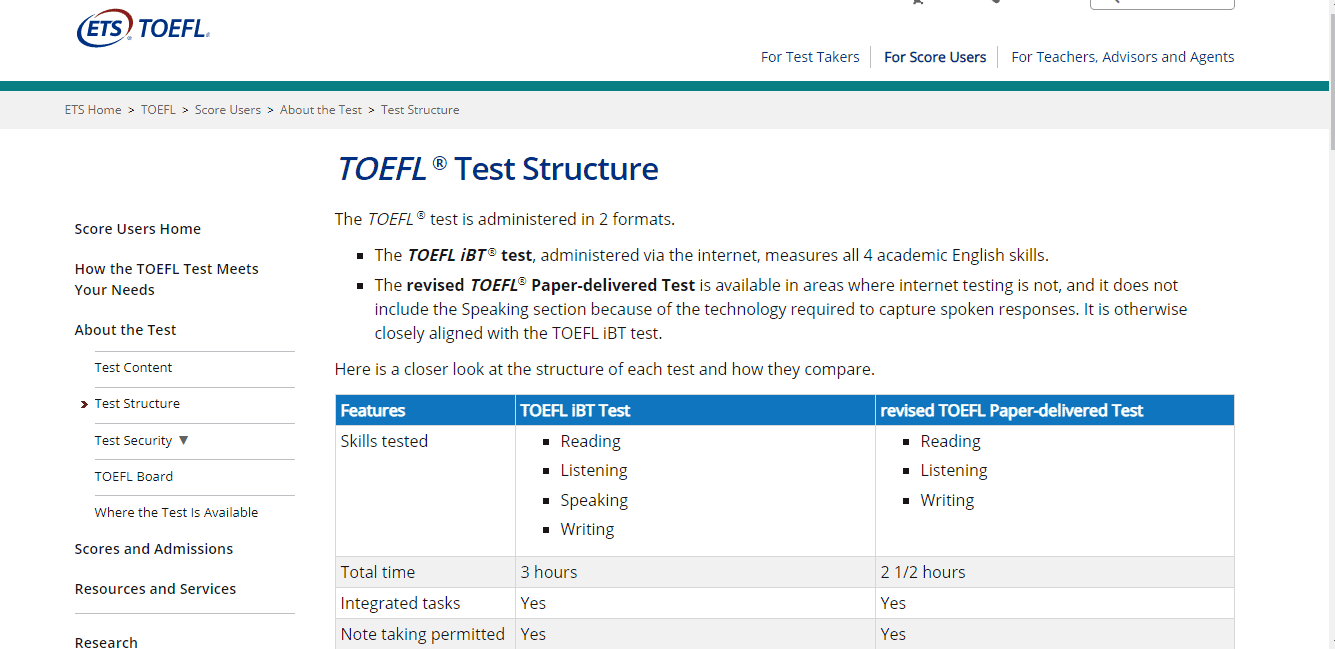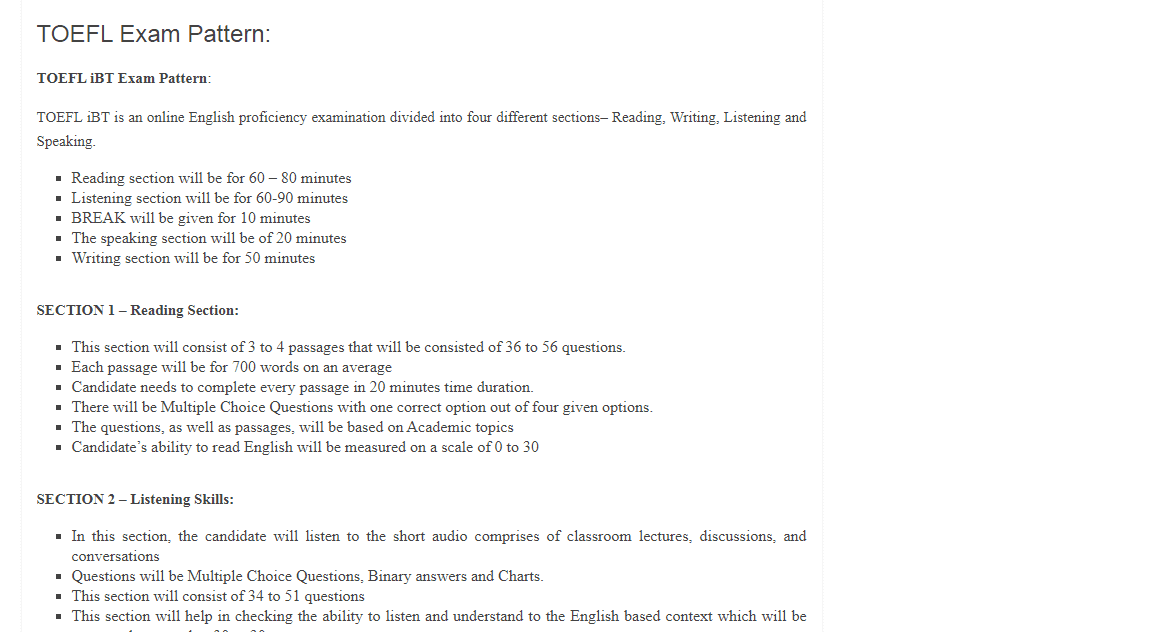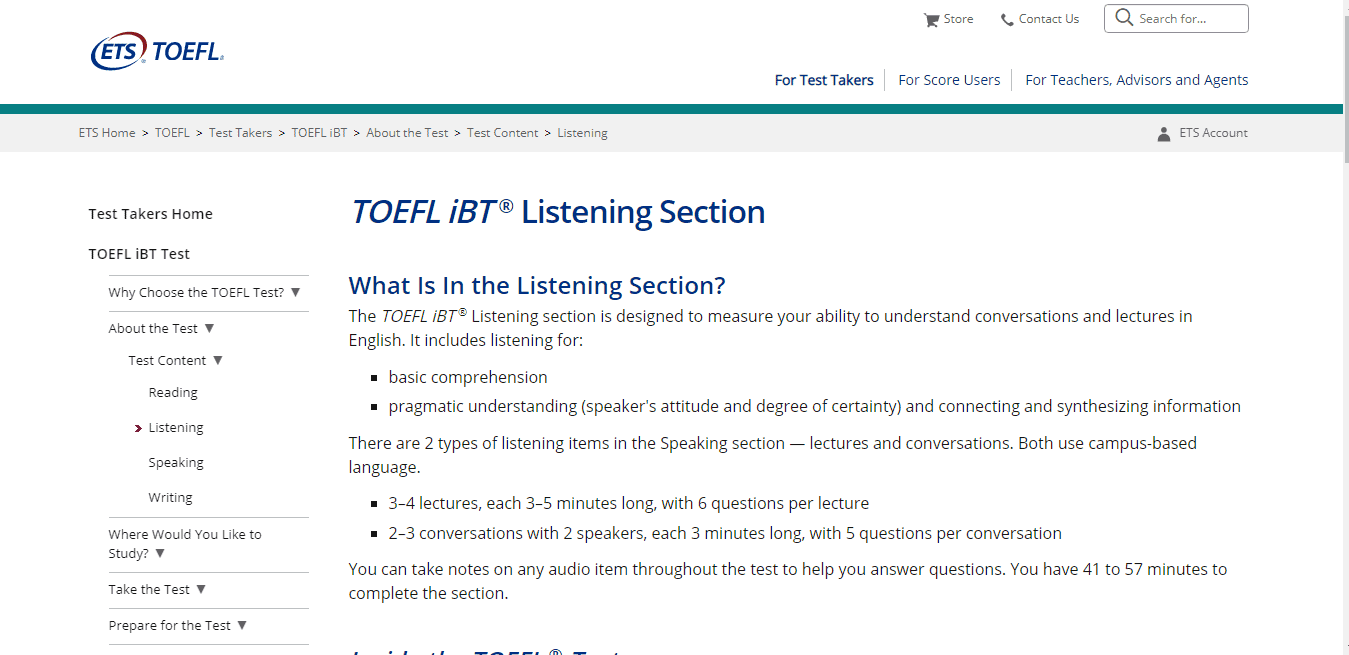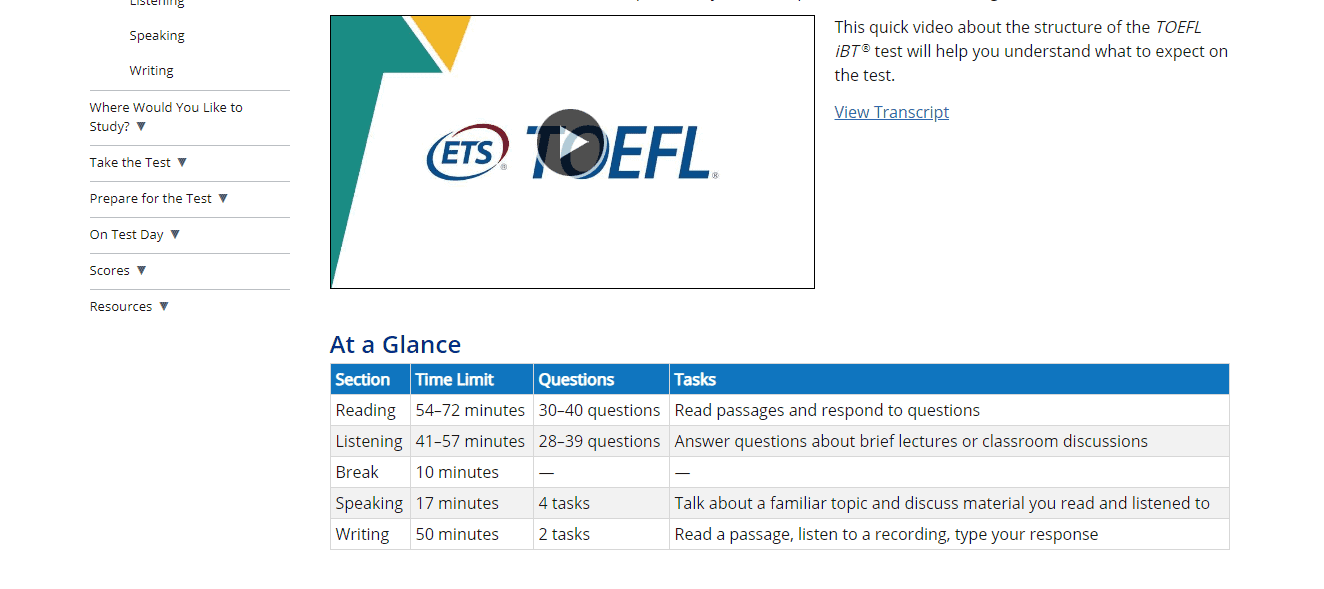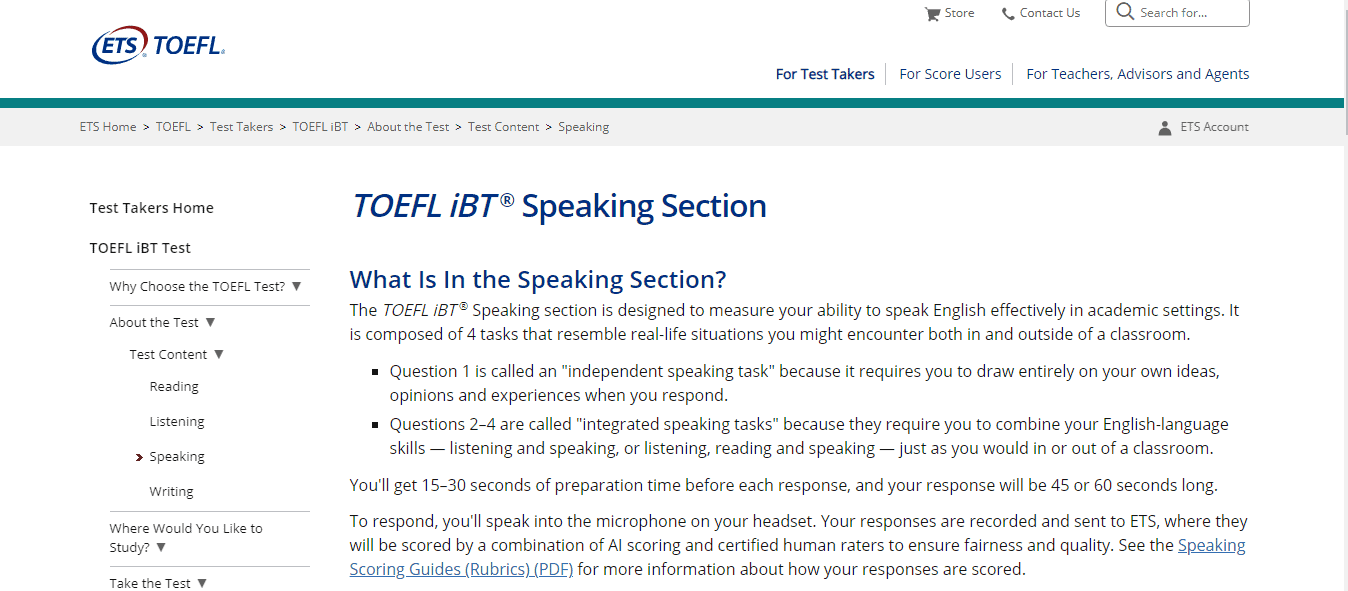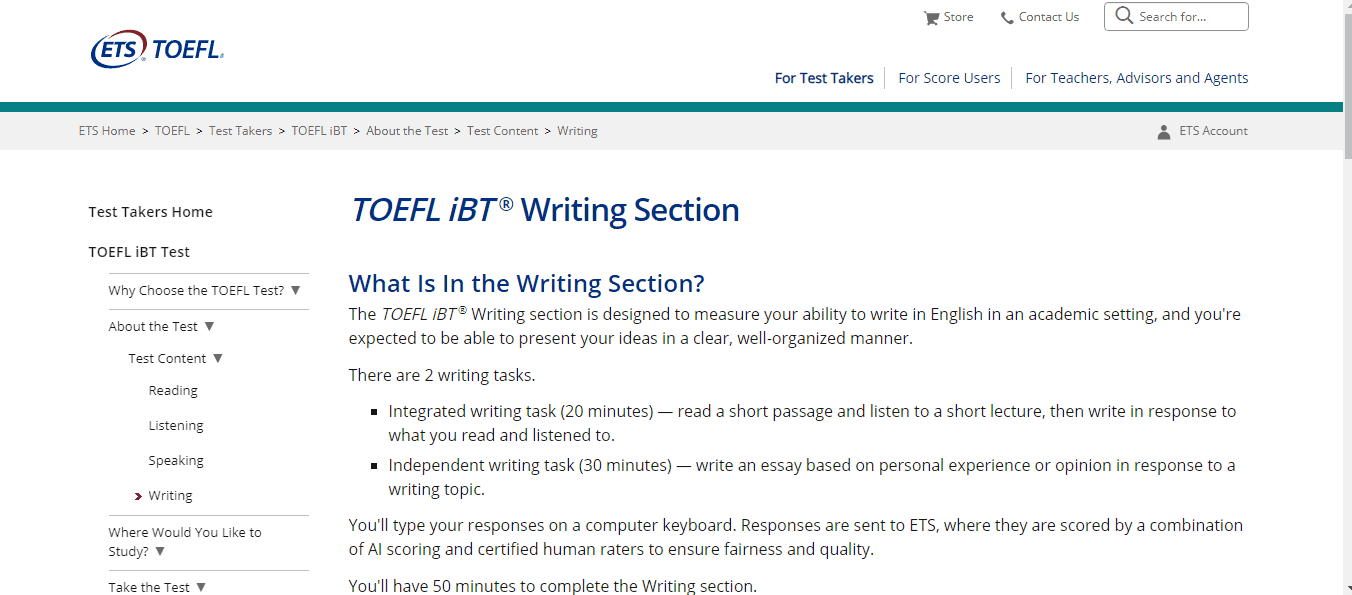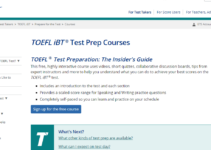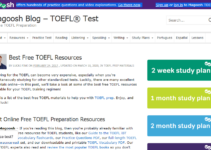When you decide to appear for the TOEFL test, preparing well for it is one thing but you should be well-aware of the whole TOEFL Sections exam.
You should know the answer to these questions – the number of sections in the exam, the number of questions in each section, the type of questions in each section, etc.
This article will focus on the TOEFL test format as a whole, the format of each section, and the TOEFL iBT structure.
Exam Pattern of TOEFL
The four basic characteristics of the TOEFL Sections are – sections, type of questions, number of questions, and time limit for each section. We will first discuss here the timing structure of the TOEFL iBT exam. It is a computer-based exam (iBT: internet-based-test) and takes around three hours. It consists of four sections – Reading, Listening, Speaking, and Writing. The primary focus of each section is on English skills because the TOEFL exam tests your vocabulary skills to see if you are capable of being a part of a school or college where English is the primary language.
Each section tests you on different skills, like the Reading section will focus on reading passages and understanding them correctly, the Listening section will make you listen to audio tracks to see if you can comprehend them, the Speaking and Writing sections comprise integrated tasks and include Reading and Listening skills as well.
Thus, the former two sections dominate the TOEFL exam structure because every section involves both or any one of these skills.
Time Limit for Each Section
- Listening: 41-57 minutes
- Reading: 54-72 minutes
- Writing: 50 minutes
- Speaking: 17 minutes
It is evident that the Writing and Speaking sections have a set time limit, whereas the Reading and Listening sections have varied time limits because these sections can sometimes have unscored experimental questions too. You need not bother about which question is what, simply put your best foot forward while attempting. Also, do not get overwhelmed or scared with the given time limit, but also bear in mind that the time limits can make or break you on the TOEFL exam.
Section-wise Overview
Having understood the time limits for each section, let us now try to understand the content and length of the TOEFL exam.
1). Reading Section | TOEFL Sections
This section comes first in the TOEFL Sections test. A standard Reading section will have three passages that will take 54 minutes with 30 questions. But, if you have additional experimental questions, then it becomes 40 questions with a time limit of 72 minutes. 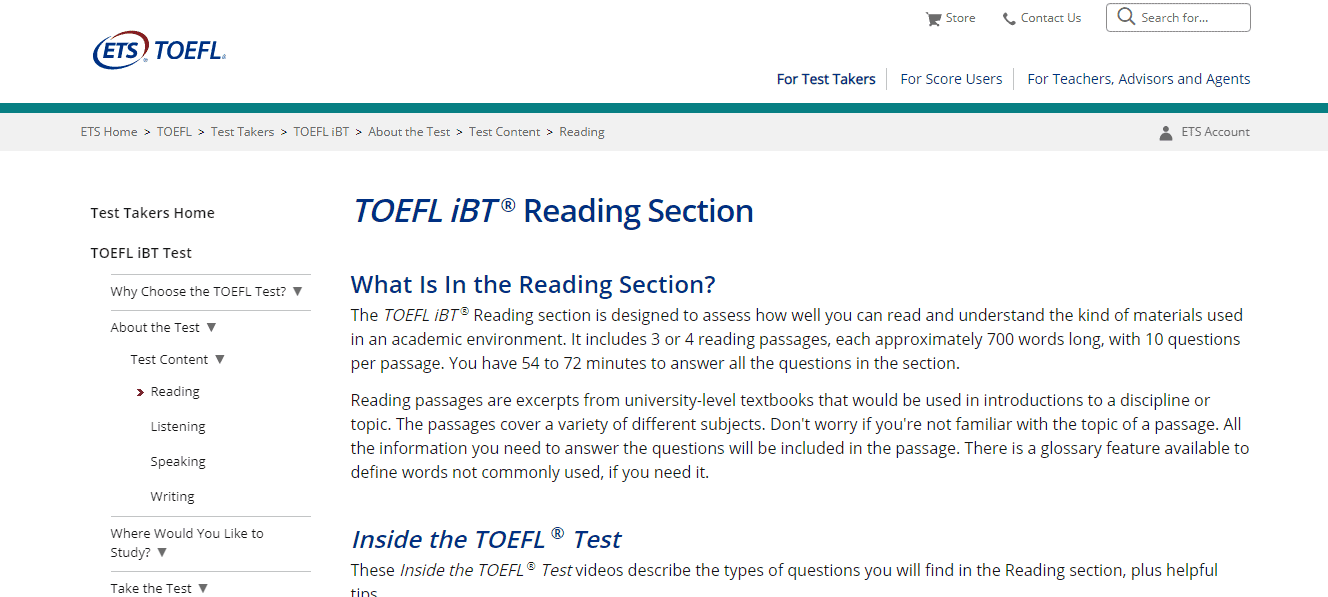
- Insert Text Questions – In the TOEFL Reading passage set of questions, you will get only one insert text question. This question will be numbered at the 9th position in the questions set. Each question is worth one raw point.
- Reading-to-Learn Questions – The reading-to-learn questions are worth 2-3 points and have 3-5 answers. They are of two types – Prose summary and Categorization. In the former type, there will be five sentences out of which you have to choose three that show the biggest ideas from the passage you have read. In the latter type, you will have to match a list of given statements to the thing they depict.
Tips to Excel in TOEFL Reading Section
Now that you know the Reading Section structure of the TOEFL exam is fixed, you can make use of the following tips to score well in this section.
- Strategy for reading the passage – You can follow any strategy of reading the passage that suits you, like – read the whole passage first, then go through the questions and look for answers in the passage, read paragraph-wise and attempt the question, read the topic of the paragraph and just skim through the paragraph and then look at the questions, read the questions first and then visit the paragraph for the right answers. No technique is good or bad, it all depends on you. So, practice well and see which approach works the best for you then stick to it.
- Manage the Speed – An average of 1min 48 sec is the time for each question in the Reading section. And, for answering a question in this section, first, you have to read and understand it. Also, it is essential to keep some extra time to recheck your answers. So, the ideal scheme that you can follow is:
Passage Reading – 9 minutesEntering answers – 7 minutesChecking – 2 minutesYou can try to master within these time limits or can adjust a bit as per your ease if you are a fast or a slow reader.
- Vocabulary – The Reading section in the TOEFL exam has the toughest vocabulary so you need to excel in this sphere. Practice the reading tests well and enhance your vocabulary during the preparation time. You can also work on some strategies to help yourself in handling unfamiliar vocabulary words. Sometimes you can understand the meaning of a difficult word from the context of the sentence.
2). Listening Section | TOEFL Sections
The structure of the TOEFL Listening section has no predictable pattern and usually has 28 questions to be attempted in 41 minutes. The section with experimental questions has 39 questions to be answered in 57 minutes. The timing of this section is divided between the clock time and the overall time. The clock time is the time when your screen time is running and the overall time is the time that includes the audio clips playing time when the clock is not running. The audio clip is played only once and you cannot replay or rewind it. You earn the raw points that get converted to official score points ranging from 0 – 30. Each question amounts to one raw point.
The Listening questions are asked in two formats, as mentioned earlier – Multiple Choice and Categorization. Let’s have a look into both the formats:
- Multiple Choice Questions – The TOEFL Listening questions with multiple choices offer four answer choices, where a majority of the questions have one correct option and a few have multiple correct options. Every multiple-choice question can get you one raw point.
- Categorization Questions – These types of questions are not so common in the structure of the TOEFL Listening exam, but you can find at least one such question in the test. These questions come in the form of tables of categories and information. Every such question can score you two raw points and in case of miscategorizing one answer, you score one point.
Tips to Excel in TOEFL Listening Section
Once you are aware of the TOEFL exam pattern, you must follow some tips to smartly attempt the sections. Following are three winning tricks for attempting the Listening Section:
- Avoid Distraction – No doubt, a Listening test requires your complete attention and expects you to keep up with the pace of the speech in audio clips, etc. But, it is not possible for a normal human being to never miss a single critical word during the Listening test. Even the best of the best can make such mistakes and it is extremely fine. Do not stress over it and spoil the rest of your exam. Do not get distracted if you miss something in the speech, instead focus on what is coming ahead. Stay calm and composed and do not rush as you may get enough cues ahead to understand what you just missed.
- Take Essential Notes – While Listening to the audio clips or speech, you should take down important notes, but also do not waste time jotting down too many things as you may miss important things. Do not write full sentences while taking notes and keep them short so that you can concentrate more on the actual meaning of the speech.
- Identify the Crucial Points – You must know the difference between crucial and not-so-important information in the TOEFL Listening exam. Always take enough tutorials and practice tests to acquire this essential skill of identifying.
3). Break Time – 10 Minutes | TOEFL Sections
This is a very important time to relax and refresh your mind after going through the rigorous Reading and Listening sections. The structure of the TOEFL exam makes it mandatory to have a 10-minute break after the Listening test. You can utilize this time in the following:
- Move around your desk or system as sitting all this while can be exhausting physically. You will surely feel awakened after taking a short walk.
- Eat or drink something to refresh yourself. Do not overeat or drink as it can leave you feeling more tired and can affect your performance in the upcoming part.
- Go to the washroom and get fresh because after this you can only do this once the whole exam is over.
- Keep some extra time for a security check while coming back from the break. It can take a few minutes, so keep some time handy.
4). Speaking Section | TOEFL Sections
The Speaking test is the shortest one in the TOEFL Sections. It is only for 17 minutes, with four tasks and each task under this has a separate time limit. Each task in the Speaking test carries four raw points and 7.5 scaled points. Here, the answers are not right or wrong, instead, the ETS takes the help of professional scorers who rank every response of yours on a scale of 1-4.
- Task 1: Independent
Here, you will be given a social issue on which you will speak your personal opinion. The topic can be anything on common social issues, across different cultures. You will be given to prepare on the topic for 15 minutes and a response time of 45 seconds.
- Task 2: Integrated (Reading and Listening, Student Life)
You will be given a small passage or an announcement of about 80-100 words to read after which you will be made to listen to a short conversation about that passage. You have to read and listen and then make a short speech summarizing the opinion of the speaker. The reading time will be 50 seconds, the audio clip will be of around one minute, a preparation time of 30 seconds, and a response time of 60 seconds.
- Task 3: Integrated (Reading and Listening, Academics)
This task deals with academics, where you will be asked to read a short passage (80-100 words) on an academic topic. Thereafter you will listen to a lecturer giving examples to support the ideas. You will have to read and listen and then prepare a short talk to summarize the whole topic. Here, the reading time is 45 seconds, the audio clip will be of around one minute, a preparation time of 30 seconds, and a response time of 60 seconds.
- Task 4: Integrated (Listening)
In this section, you will be made to listen to a lecture. Then you will be asked to give a short speech on the main ideas of that lecture. The listening time will be around two minutes, preparation time 20 seconds, and a response time of 60 seconds.
Tips to Excel in TOEFL Speaking Section
Let’s have a look at the tips and tricks to perform well in the TOEFL Speaking exam:
- Write the Responses – You obviously cannot write word-to-word of what you want to say but write in a way such that you can read it aloud while answering. Structure your response in a way that shows that you have understood everything.
- Think Fast – It is very important to think fast for Task1 as you only get 15 seconds to prepare. You must come up with enough ideas so that you can fill up your 45 seconds of speaking time, fruitfully.
- Work on Intonation – It is very crucial to pronounce the words correctly in the Speaking test, but it also vital to work on intonation, pitch, and rhythm of your speech. This is the reason the structure of the TOEFL exam has a Speaking section.
5). Writing Section | TOEFL Sections
The Writing Section is the simplest one as it only has two tasks, where each essay is scored on a scale of 0-5. The weightage of both essays is equal. The time limit of this section is 50 minutes overall. But, each task has a different structure and timing, as discussed below.
- Task 1: Integrated
Here, you will be made to read a 250-300 words passage and this passage will make three main claims. Then you will be made to listen to a lecture of a professor who will be disagreeing with each of these claims. Your task will be to write an essay on how the claims have been made in the passage and how the lecturer is challenging those claims. Here, the reading time is 3 minutes, lecture time is around two minutes, and the response time is 20 minutes. The recommended length of the essay is 150-225 words.
- Task2: Independent
In this task, you will be asked to take a stand on some social issue or will be given a detailed scenario, situation, or a plan and then asked to make a decision on it. Here the response time is 30 minutes and the recommended length of the essay is 300 words or more.
Tips to Excel in TOEFL Writing Section
- Prewrite – To create a good essay in TOEFL writing, you should learn to prewrite. This means create notes or a short outline that highlights your ideas and the structure of your essay. Brainstorm the ideas and select the ones that you want to use in your essay. These tricks will help you easily create a meaningful essay for the Writing exam.
- Practice Well – It is challenging to write a long essay of 300+ words in only 20 minutes. But practice makes a man perfect, so it is advised to practice writing the TOEFL essays right from the start. First, try to write a good-constructed essay in the prescribed word count, and then work on the writing speed. Enhance your writing skills and speed during the preparation months so that on the final exam you are all set.
- Go through Model Essays – It is always better to go through TOEFL model essays and look at examples to get a better idea of what and how you should approach this section.
Quick Links
FAQs | TOEFL Sections
👉 Is note-taking permitted in the TOEFL Listening and Writing exam?
Yes, you can take notes while listening to a speech or before writing an essay. but, make sure you do not waste time in writing long notes. Be short and crisp.
👉 How can I complete the Reading paper accurately and in less time?
There are many approaches to attempt the reading section. You can either read the passage first and then attempt questions or skim through the questions first and then read the passage to look for answers. Both approaches are perfect, but do what suits you.
👉 How can I prepare well for the Listening section exam?
It will be helpful if you enhance your listening skills by gathering English recordings of different accents. You can also record parts of English news and listen to it.
Conclusion | TOEFL Sections | What is the TOEFL Structure 2024
TOEFL is no doubt a pretty hard and exhausting exam, but if prepared well in advance you can easily crack it. It is very important to know the TOEFL Sections for the exam before appearing for it, as you will know what is coming your way.
Take TOEFL practice exams thoroughly and determine what are your weak and strong areas. Keep in mind the time limits of each section and prepare your approach for each and every task. This article has given a detailed insight into the structure and timing of the TOEFL exam. All the Best!
